How truthful are food labels?
“All-natural,” “organic,” or “GMO-free;” do you know what any of it actually means? Before you go on your next grocery shopping spree, test your knowledge by taking our quiz to see how much you know about Food and Drug Administration (FDA) and United States Department of Agriculture (USDA) requirements for food labels.
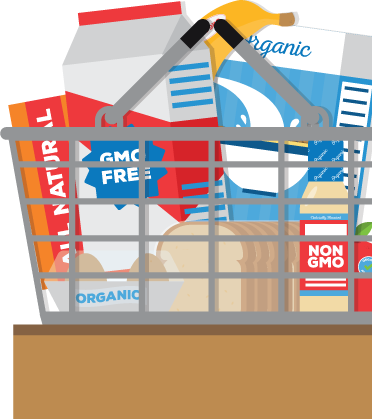
Genetically modified organisms (GMOs) make up what percent of each of the following crops?

CORN

COTTON

SOYBEANS
EXCELLENT JOB!
You got them all right. Many consumers don’t realize how prevalent GMOs are in some of our most common crops: 94% of cotton, 93% of soybeans, and 88% of corn is genetically modified. Meanwhile, the FDA has yet to decide whether they have a net positive or negative impact on the health of consumers.
Learn more about GMOs
CORRECT ANSWERS
YOU WERE CLOSE.
At this point, 94% of cotton, 93% of soybeans, and 88% of corn is genetically modified. Meanwhile, the FDA has yet to decide whether GMOs have a net positive or negative impact on the health of consumers.
Learn more about GMOsNOT QUITE RIGHT.
At this point, 94% of cotton, 93% of soybeans, and 88% of corn is genetically modified. Meanwhile, the FDA has yet to decide whether GMOs have a net positive or negative impact on the health of consumers.
Learn more about GMOs
CORRECT ANSWERS
What percentage of a product needs to be organic for it to be labeled "organic?"

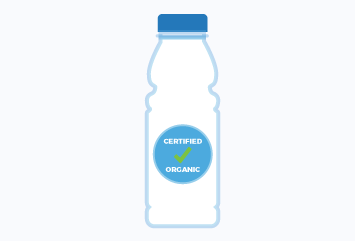
EXCELLENT JOB!
You got it right. To be labeled “organic,” the USDA requires proof from an outside agency that 95% of the product is produced organically.
Learn more aboutORGANIC NUTRITION

CORRECT ANSWER
YOU WERE CLOSE.
If a product consists of 70–95% organic material, then it can include “made with organic ingredients” on its label. To be labeled “organic,” the USDA requires proof from an outside agency that 95% of the product is produced organically.
Learn more aboutORGANIC NUTRITION

CORRECT ANSWER
NOT QUITE RIGHT.
If a product consists of 70–95% organic material, then it can include “made with organic ingredients” on its label. To be labeled “organic,” the USDA requires proof from an outside agency that 95% of the product is produced organically.
Learn more aboutORGANIC NUTRITION

CORRECT ANSWER
Which of these foods can be labeled "cholesterol- free" ?
Select all that apply.

CHICKEN
(70mg cholesterol)

APPLES
(0mg of cholesterol)
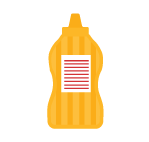
MUSTARD
(< 2 mg of cholesterol)
EXCELLENT JOB.
If a product has less than 2 mg of cholesterol per serving, it can be labeled cholesterol free. However, using this type of label on fruit and other fresh produce is potentially misleading since these foods are naturally cholesterol-free.
Learn more about Cholesterol Free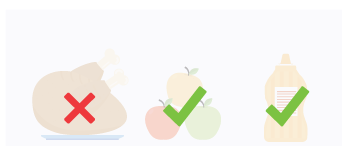
CORRECT ANSWERS
VERY CLOSE.
Very close. In order to be labeled cholesterol-free, a product must contain less than 2 mg of cholesterol per serving.
Learn more about Cholesterol FreeNOT QUITE RIGHT.
If a product has more than 2 mg of cholesterol per serving, it cannot be labeled cholesterol-free.
Learn more about Cholesterol Free
CORRECT ANSWERS
If a package reads
"made with real fruit,"
it can:
Select all that apply.
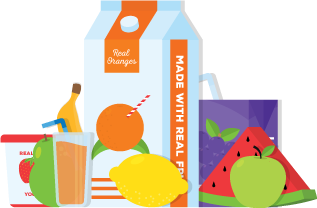
Be made with negligible amounts of fruit.
Be made with fruit concentrate.
Be referring to a fruit other than the one that is pictured on the package.
That’s correct.
"Made with real" labels are almost entirely unregulated. In the case of fruit, this type of label almost always refers to concentrate, and it can be any kind of fruit even if the packaging pictures something else.
Learn more aboutMade With Real
Be made with negligible amounts of fruit.
Be made with fruit concentrate.
Be referring to a fruit other than the one that is pictured on the package.
CORRECT ANSWERS

very close.
"Made with real" labels are almost entirely unregulated. In the case of fruit, this type of label almost always refers to concentrate, and it can be any kind of fruit even if the packaging pictures something else.
Learn more aboutMade With Real
Be made with negligible amounts of fruit.
Be made with fruit concentrate.
Be referring to a fruit other than the one that is pictured on the package.
CORRECT ANSWERS

Not Quite Right.
"Made with real" labels are almost entirely unregulated. In the case of fruit, this type of label almost always refers to concentrate, and it can be any kind of fruit even if the packaging pictures something else.
Learn more aboutMade With Real
Be made with negligible amounts of fruit.
Be made with fruit concentrate.
Be referring to a fruit other than the one that is pictured on the package.
CORRECT ANSWERS

To be labeled
"free range,"
poultry must:
Select all that apply.


Be given access to the outdoors for over 51% of their lives.
Be certified by an outside agency.
Be from a climate where year-round outdoor access is feasible.
EXCELLENT CHOICES.
Free-range poultry is supposed to have access to the outdoors for over 51% of their lives, but the only proof required is a written statement from the producer, not an outside agency. Colder climates can still produce free-range products, but not if they keep the poultry in coops all winter.
Learn more aboutFree Range
Be given access to the outdoors for over 51% of their lives.
Be certified by an outside agency.
Be from a climate where year-round outdoor access is feasible.
CORRECT ANSWERS

VERY CLOSE.
Free-range poultry is supposed to have access to the outdoors for over 51% of their lives, but the only proof required is a written statement from the producer, not an outside agency. Colder climates can still produce free-range products, but not if they keep the poultry in coops all winter.
Learn more aboutFree Range
Be given access to the outdoors for over 51% of their lives.
Be certified by an outside agency.
Be from a climate where year-round outdoor access is feasible.
CORRECT ANSWERS

NOT QUITE RIGHT.
Free-range poultry is supposed to have access to the outdoors for over 51% of their lives, but the only proof required is a written statement from the producer, not an outside agency. Colder climates can still produce free-range products, but not if they keep the poultry in coops all winter.
Learn more aboutFree Range
Be given access to the outdoors for over 51% of their lives.
Be certified by an outside agency.
Be from a climate where year-round outdoor access is feasible.
CORRECT ANSWERS

Which of these labeling terms is recognized in FDA guidance?
Select all that apply.

WHOLE GRAIN

MULTIGRAIN
EXCELLENT CHOICES.
The FDA recommends that "whole grain" be used to refer exclusively to “cereal grains” whose “principal anatomical components are present in the same relative proportions as they exist” in nature. In contrast, the FDA has not offered any guidance on the use of multigrain in food labeling.
Learn more aboutWhole Grain

CORRECT ANSWERS
NOT QUITE RIGHT.
The FDA recommends that "whole grain" be used to refer exclusively to “cereal grains” whose “principal anatomical components are present in the same relative proportions as they exist” in nature. In contrast, the FDA has not offered any guidance on the use of multigrain in food labeling.
Learn more aboutWhole Grain

CORRECT ANSWERS
The FDA only requires that food labeled "all-natural" must not include:
Select all that apply.
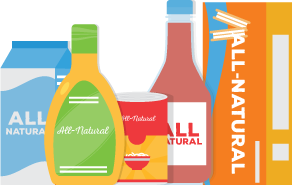
GMOs
Artificial Flavors
Added Colors
High Fructose Corn Syrup
Synthetic Substances
EXCELLENT CHOICES.
The FDA does not have any official definition of “natural,” but many companies use the label on their foods. The FDA has “not objected to” the use of “natural” as long as the food does not contain added color, artificial flavors, or synthetic substances.
Learn more aboutALL NATURAL
GMOs
Artificial Flavors
Added Colors
High Fructose Corn Syrup
Synthetic Substances
CORRECT ANSWERS

NOT QUITE.
The FDA does not have any official definition of “natural,” but many companies use the label on their foods. The FDA has “not objected to” the use of “natural” as long as the food does not contain added color, artificial flavors, or synthetic substances.
Learn more aboutALL NATURAL
GMOs
Artificial Flavors
Added Colors
High Fructose Corn Syrup
Synthetic Substances
CORRECT ANSWERS

What is the maximum distance food can travel in order to be considered "local"?
Slide the truck to select your answer.
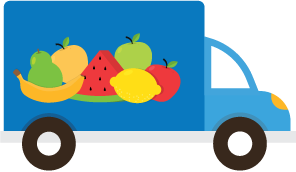
100 miles
240 miles
500 miles

miles
100
240
500
this was a bit of a trick question.
There’s very little guidance for what constitutes local, so the definition varies based on whom you ask. Many “locavores,” or people who consume mostly locally produced food, restrict their diet to goods produced within 100 or 250 miles of their home. Some farm grants intended to promote local produce set the bar at 400 miles from the origin of the food, but many store chains and brands set their own standards.
Learn more about LOCAL








